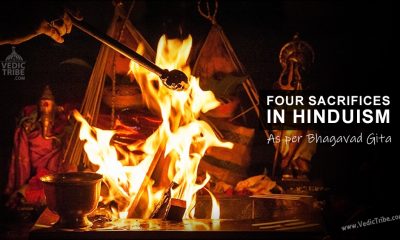Sikhism
Sikhism – Five vices to stay away from
Published
4 years agoon
By
Vedic Tribe
You cheat the consciousness and pervade the 3 Worlds. You destroy meditation , penance and virtue.
Every religious path has its own set of vices which its followers are enjoined to avoid.
Talking about sikh way of living , there are 5 cardinal vices : Kaam ( lust ), Krodh ( anger ), Lobh ( greed ), Moh ( worldly attachment ) and Ahankaar ( ego ).
In order to avoid vice, we must be able to recognize vice itself than develop the will to overcome it. These are the great enemies of man and cause much suffering. While they reside in the human body, how can the Name of God find a place in it.
Homai – Aham – Ego
In Sikhism, homai, or ego, is considered to be the primary cause of evil doing. Five elements of ego are basic drives and motivators of the body and intellect. Ego’s inner dialogue capable of enslaving the soul in illusory pursuits of Maya, miring it in material distractions. Excessive volume of ego’s voices results in separation from the divine, and perpetuating vice resulting in harmful, even demonic, acts. Ego’s volume may be reduced with focus on spiritual practice, and selfless service. When ego is subdued, the soul’s achieves humility and realizes its inherent relationship with the divine.
Kaam – Lust
The voice of Kaam, or lust, depending on the volume, can manifest as rational, or irrational, to serve, or enlsave, the soul:
In Sikhism the ethical voice of desire to procreate is sanctioned by the Anand Karaj matrimonial ceremony.
Indulging the voice of lustful desire may take the form of recreational pursuit outside of marriage and result in unwanted pregnancy, abortion, children born out of wedlock, divorce, and breakdown of the family unit.
An excessive increase in volume of the inner voice of kaam can drown the voice of reason to inflame desire resulting in the desecration of morality and abject licentious behavior, perversion, promiscuity, prostitution and rape.
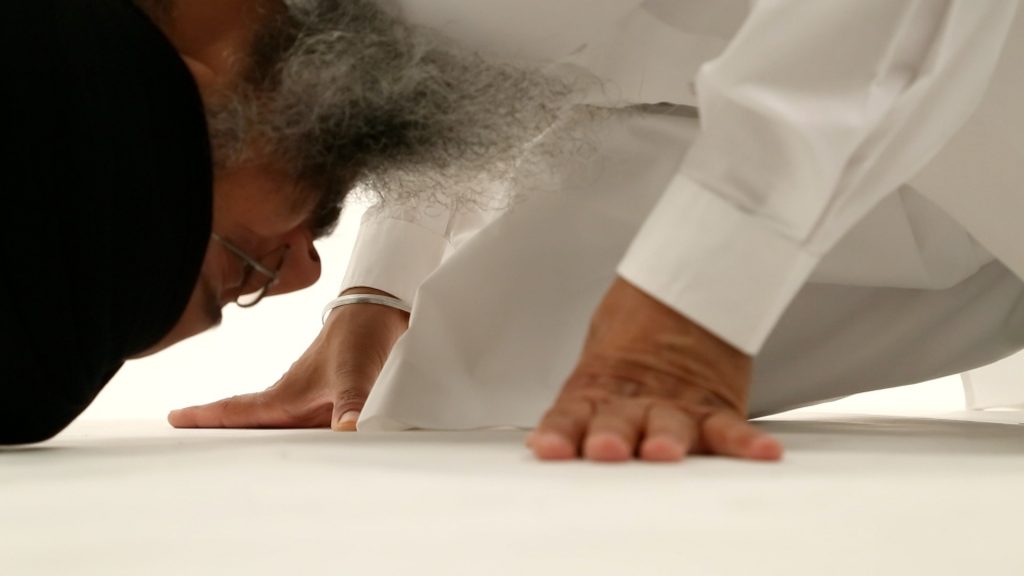
Krodh – Anger
The voice of Krodh, or anger, depending on the volume, can manifest as rational, or irrational, to serve, or enlsave, the soul:
Reasonable anger can manifest in assertive or protective behavior, and righteous protest.
Indulging the voice of khrodh can easily trigger rage resulting in hurtful and harmful behavior.
An excessive increase in volume of the inner voice of khrodh can drown the voice of reason inflaming passions and resulting in murder.
Lobh – Greed
The voice of Lobh, or greed, depending on the volume, ccan manifest as rational, or irrational, to serve, or enlsave, the soul:
An ethical voice inspires honest labor to provide necessities and comfort.
Indulging the voice of greed can lead to excessive appetite for food, money, or power, resulting in gluttony.
The excessive voice of inflamed greed can override the voice of result in obsessive coveting if material possessions and theft.
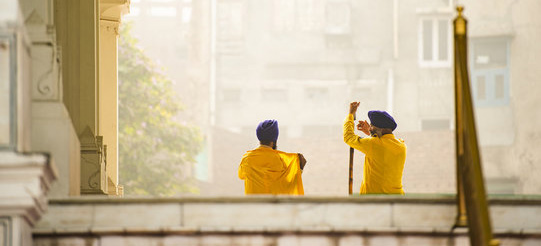
Moh – Attachment
The voice of Moh, or attachment, depending on the volume, can manifest as rational, or irrational, to serve, or enlsave, the soul:
Ethical attachment to spiritual pursuits, devotion, meditation and selfless service enriches the soul.
Indulging attachment to family and home and professional pursuits results in the neglect of spiritual life.
Excessive attachment to Moh results in addiction and enslavement to substances, fashion, money, pleasrue, power, fame and other illusive worldly pursuits, and desires in disregard for spiritual life.
Ahnkar – Arrogance
The voice of Ahnkar, or pride, depending on the volume, can manifest as rational, or irrational, to serve, or enslave, the soul:
A reasonable ethical voice of pride inspires dignity, honor and self esteem and self respect.
Indulging the voice of pride can result in self importance, arrogance, competitiveness, smugness, and self conceit.
The voice of excessive pride can result in self gratification, and subjecting others to submission, servitude and slavery.
You may like
Fesitvals
Significance of Baisakhi / Vaisakhi
Published
4 years agoon
April 13, 2021By
Vedic Tribe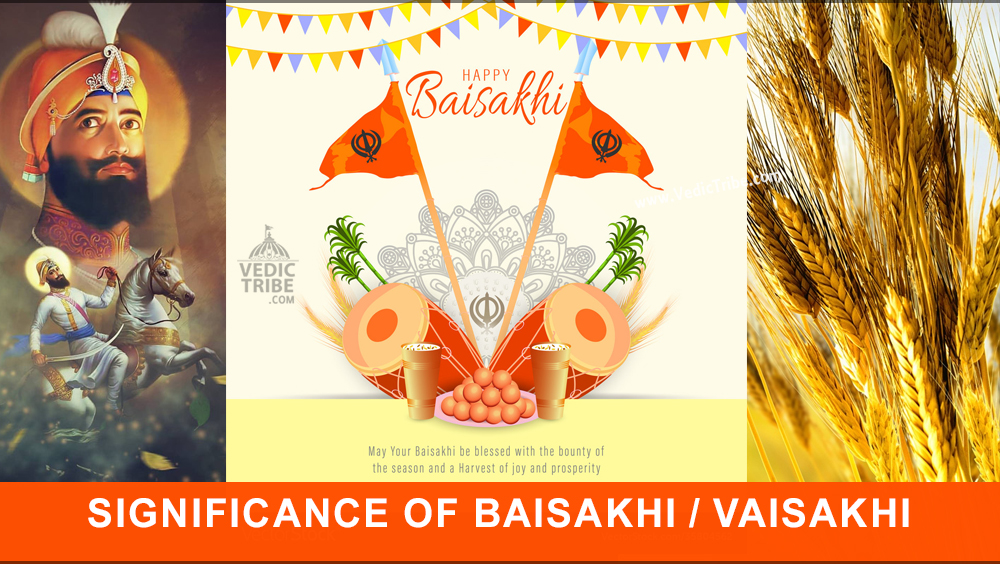
Baiskhi is also spelled ‘Vaisakhi’, and is a vibrant Festival considered to be an extremely important festival in India. It is celebrated all over India under different names and rituals.
Astrological Significance of Baisakhi
The festival of Baisakhi falls on April 13 every year and April 14 once in every 36 years. Change in date is because of the fact that date of Baisakhi is reckoned according to the solar calendar. Astrologically, the date of Baisakhi is significant as marks sun’s entry into Mesh Rashi.
For this very reason, many people also know Baisakhi as Mesha Sankranti. The auspicious date of Baisakhi is celebrated all over India under different names and rituals. It is celebrated as ‘Rongali Bihu’ in Assam, ‘Naba Barsha’ in Bengal, ‘Puthandu’ in Tamil Nadu, ‘Pooram Vishu’ in Kerala and ‘Vaishakha’ in the state of Bihar.
Significance of Baisakhi for Farmers
For the agriculturally rich state of Punjab and Haryana, Baisakhi marks the time for harvest of Rabi (winter) crops and is therefore extremely significant for the farmers. Baisakhi Festival is also celebrated as a Thanksgiving Day festival in these states. After waking up early and dressing themselves in new clothes, farmers visit temples and gurdwaras to express gratitude to God for the good harvest and seek blessing for ensuing agriculture season. Farmers also celebrate Baisakhi by performing energetic bhangra and gidda dance and participating in Baisakhi Fairs.
Significance of Baisakhi in Sikhism
Baisakhi is of major importance for the people following Sikh faith. As it was on a Baisakhi Day, in the year 1699 that the Tenth Guru of Sikhs, Guru Gobind Singh founded Khalsa Panth or the Order of Pure Ones and gave a unique identity to Sikhs. On the same day the guru administered amrit (nectar) to his first batch of five disciples making them Singhs, a martial community. By doing so, he eliminated the differences of high and low and established that all human beings were equal.
Baisakhi is New Year’s Day in Punjab. It falls on the month of Vaisakh. This festival marks the ripening of the Rabi harvest. The day coincides with the solar equinox on the13th of April. It was on this day that the tenth Sikh Guru, Guru Gobind Singh, founded the Khalsa (the Sikh brotherhood) in 1699. For Sikhs, this is as a collective birthday. It is celebrated on April 13, though once in 36 years it occurs on 14th April.
Sikhs celebrate Baisakhi by participating in special prayer meetings organized at gurdwaras. They also carry out joyful Baisakhi processions to mark the day.
Significance of Baisakhi in Other Religions
The day of Baisakhi is of significance for the Hindus as it was on this day in 1875 that Swami Dayanand Saraswati founded the Arya Samaj – a reformed sect of Hindus who are devoted to the Vedas for spiritual guidance and have discarded idol worship. Besides, Baisakhi day is of relevance for the Buddhists as Gautama Buddha attained enlightenment and Nirvana on this auspicious day.
In Kerala, the festival is called ‘Vishu’. It includes fireworks, shopping for new clothes and interesting displays called ‘Vishu Kani’. These are arrangements of flowers, grains, fruits, cloth, gold, and money are viewed early in the morning, to ensure a year of prosperity.
In Assam, the festival is called Bohag Bihu, and the community organizes massive feasts, music and dancing. Bengalis mark it as new years day or ‘Naba Varsha’ or Pohela Boishakh in Bengal, Assam and Tripura.
Puthandu (Tamil New Year) in Tamil Nadu. Whatever the history says, today Baisakhi is celebrated with all pomp and show in almost all parts of the country.
Sikhism
Original Sikh Flags Had Hindu Deities not Khanda – Part 1
Published
4 years agoon
January 8, 2021By
Vedic Tribe
All that whitewashing on their part of the Nishaan Sahib being a purely ‘Sikh’ flag & how the sacred Khanda, itself has nothing to do with Hindu Dharma – this misinformation gives the ignorant Sikhs of today a wrong sense of self pride without any one of them ever learning the truth behind how the flag came about in the first place.
Neo-Sikhs of the Singh Sabha managed to brush all the Hindu traditions under the carpet far away from the eyes of the future generations, though overlooking the main fact that Saffron is traditionally a Sanatan Dharmic colour. Our flags hoisted above sacred shrines such as Hindu mandirs & Gurudwaras symbolise the sanctity of our ancient heritage of Hinduism. Our Sadhus, Gurus, saints, vairagis etc all wear traditional colours of Saffron. They even wear seli topis & turbans & have long hair as well as beards.
This is not just the mark of a Sikh, but traditionally, a Hindu mark. Rajput warriors & Kings were the first ones to keep unshorn hair & long beards during the 15th century onwards. Before them, the Hindu Rishis & Sadhus, Siddhas & Yogis all kept unshorn hair & wore traditional turbans. But the stooges of Tat Khalsa & the Sikhi Taliban brigade have painted a very false picture to all the people of Punjab.
Ignorant of the fact that the ‘Sikh’ flag, that was carried on many a battlefield by the Nihangs & Khalsa armies, including that of Maharaja Ranjit Singhji, usually had a motif of Hindu Gods of war such as Lord Shiva, Goddess Durga, Goddess Kaumari, Goddess Varahi, Hanuman etc, the Singh Sabhias with the Talibanised Sikhs have falsely continued with their propagation of Nishaan Sahib as the original ‘Sikh’ flag during the time of the Gurus. They even deny any connections with the Hindu weaponry of Khadga ( 2 edged sword) & the Chakra ( Lord Vishnu weapon) & simply play them down as being from a different tradition.
THIS IS A BLATANT FRAUD!
Recently many questions are being raised concerning the several controversies that surround the re-writing, re-editing of Sikh history as well as the Shri Adi Granth – whether the Kartarpur Bir itself is authentic or not. However, this is another topic I will go into later on.
Back to the flag with motifs of Hindu Devatas which every Sikh & Talibanised Neo-Sikh must know of & acknowledge the fact that YES, Sikhs were Hindus of the Sanatan tradition of India before the British missionary satans ruined Punjab & divided its people who all acknowledged themselves as Hindus prior to the white guy setting foot on Indian soil. Khalsa warriors used to carry these flags onto all the battlefields when fighting the Islamic tyrants & British imperialists & it is my pleasure to present an entire post on images of great history that the Tat Khalsa stooges have kept away from all of us. Let us take a closer look at the history behind the Khanda, its sacred symbols of the Nishaan Sahib which was later on made the emblem of the Sikh flag.
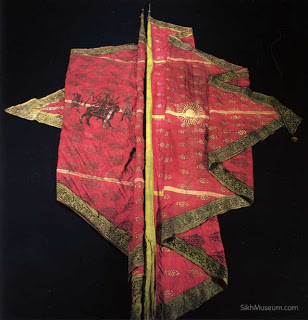
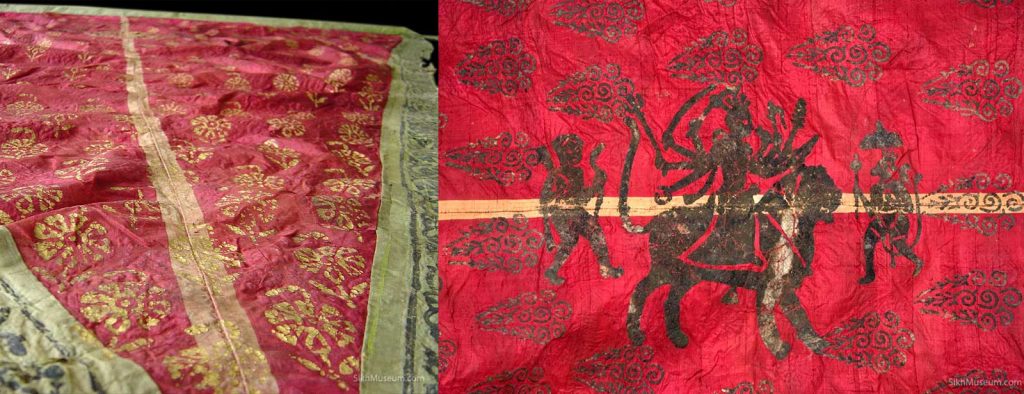
Khalsa Armies with Banner displaying motif of Goddess Varahi, the Hindu Goddess of War.
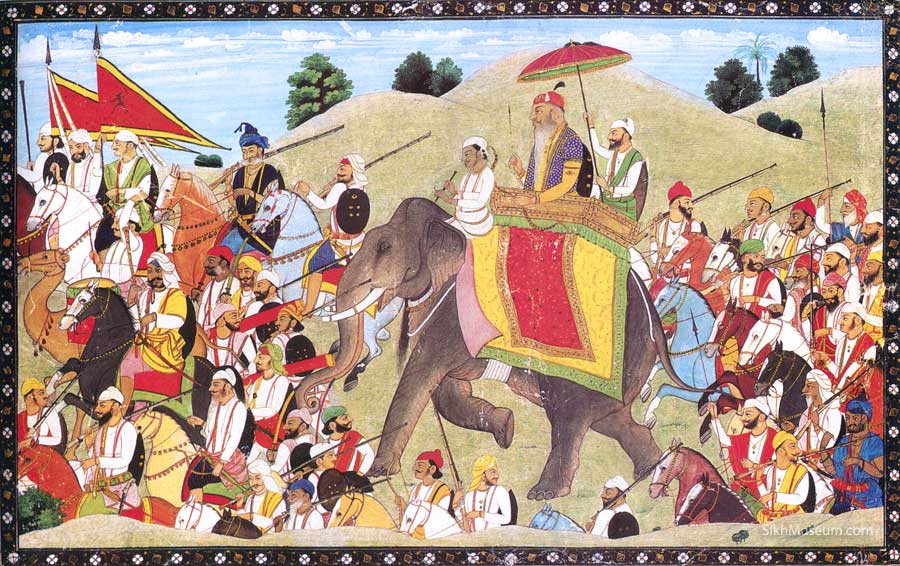
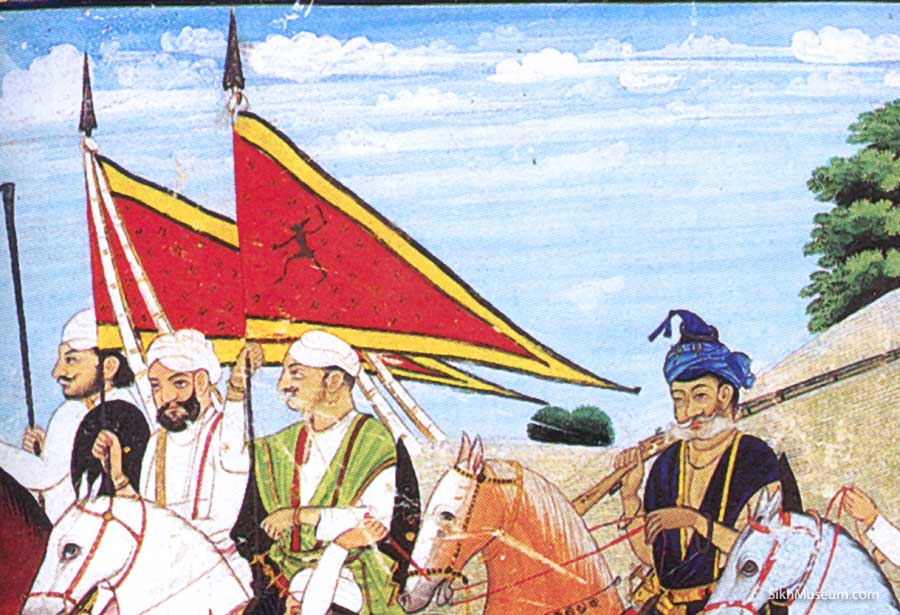
Khalsa Armies with Banner displaying motif of Goddess Varahi ,the Hindu Goddess of War.
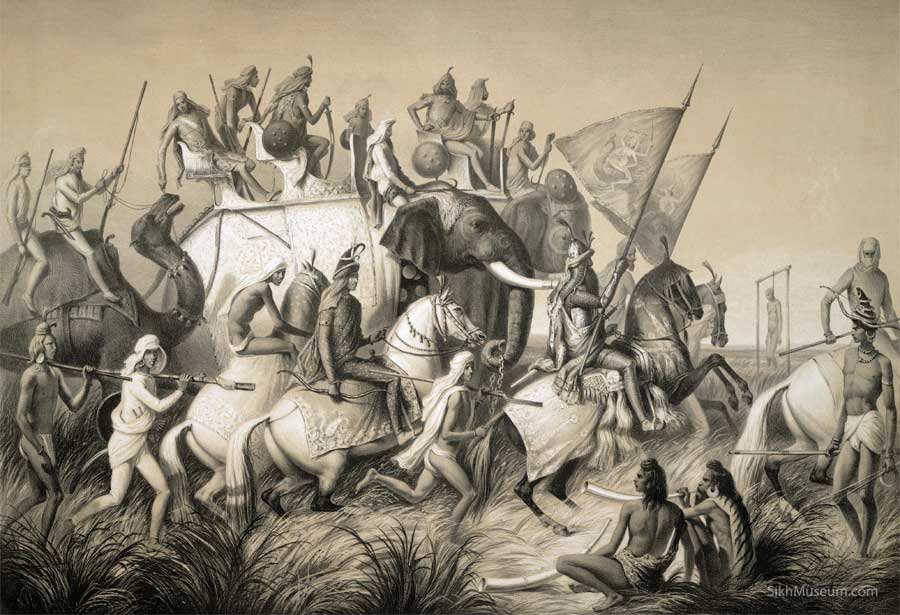
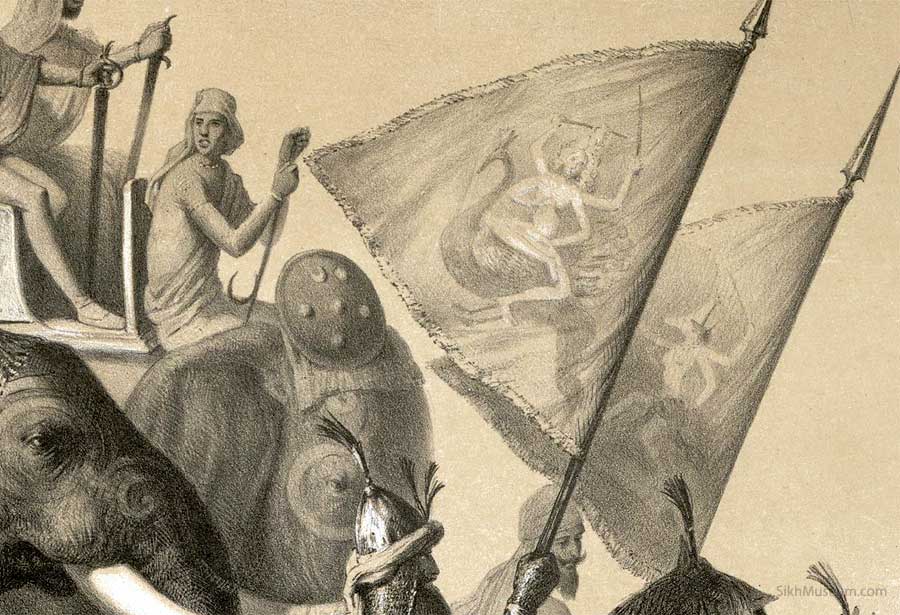
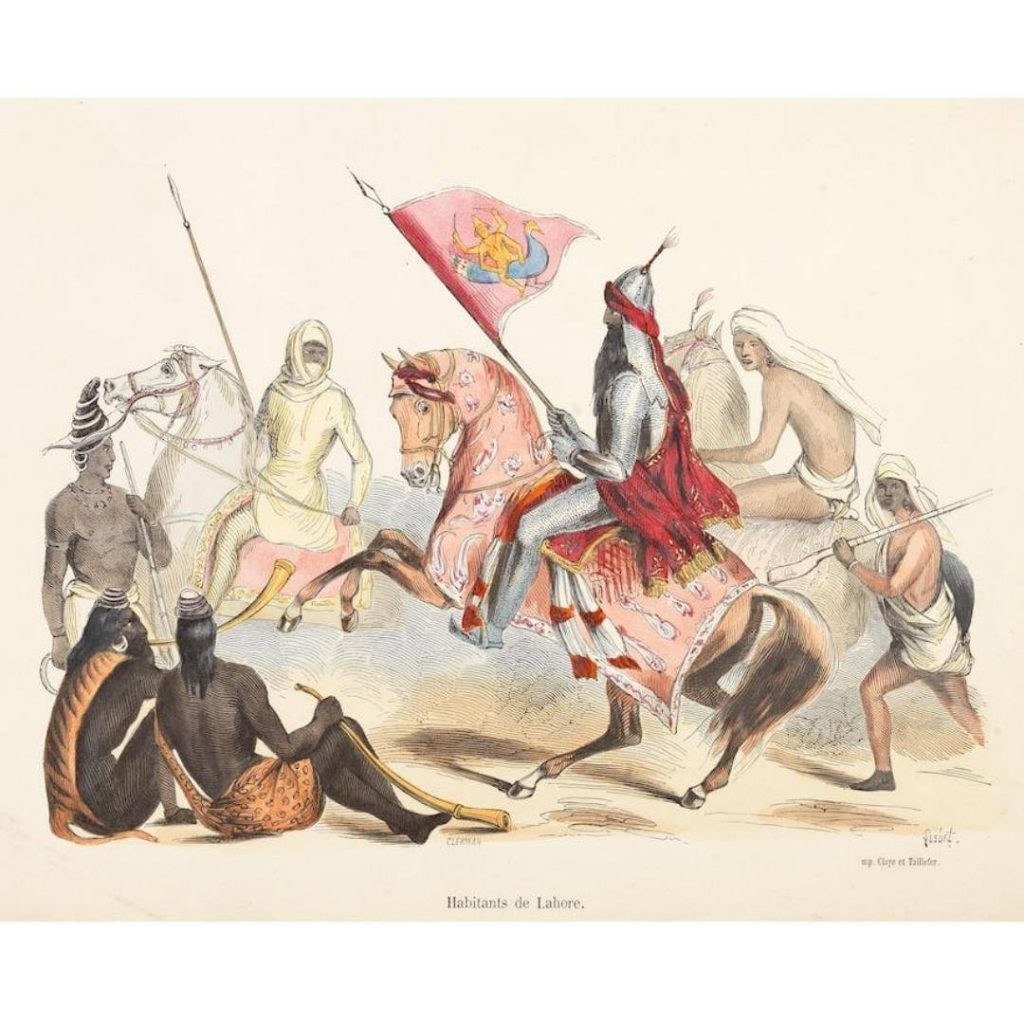
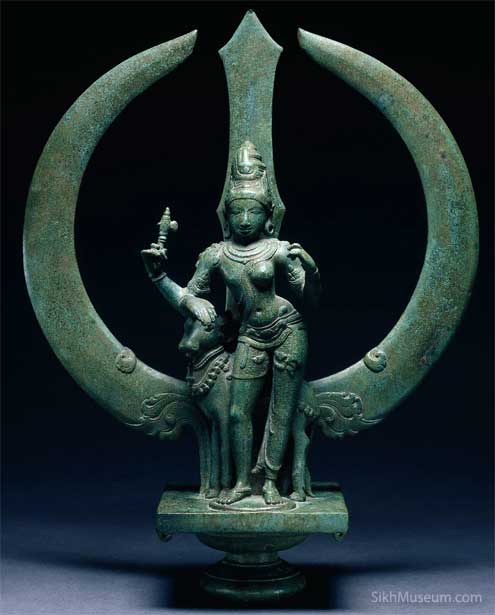
As explained by the Buddha Dal which is the oldest faction of the Nihang sect :
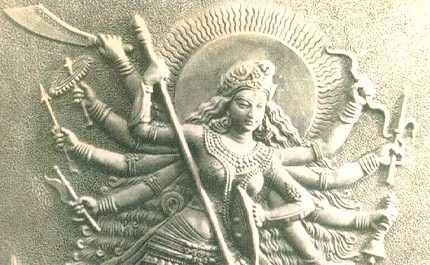
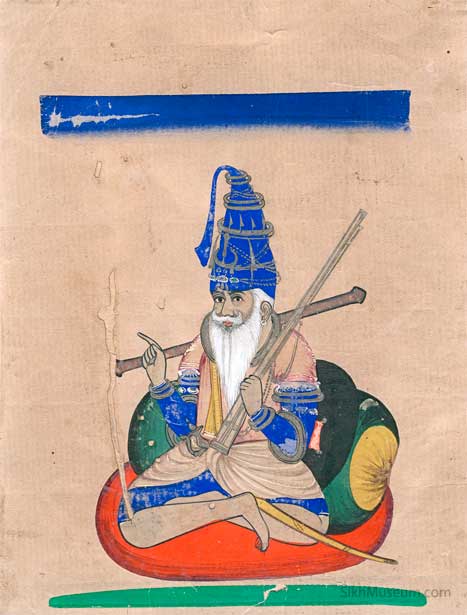
Nihang Chieftain – ca. 19th century, paint on paper, Gurmit Singh & Satnam Singh Collection
TO BE CONTINUED…
Hinduism
Brahmins who Sacrificed for Sikhs and Sikh Gurus
Published
4 years agoon
December 13, 2020By
Vedic Tribe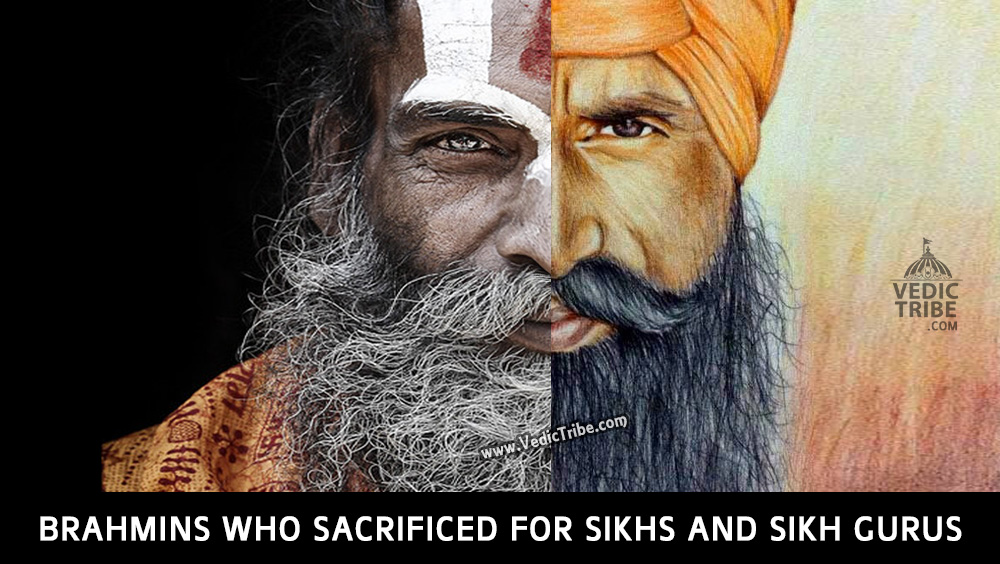
Read in Hindi below English version
Usually people from the Sikh society and the separatist Khalistani Jatts use very condemnable hateful words towards Brahmins. For a mistake of a Brahmin named Gangu, they blame the whole Brahmin society, call them coward and traitors. But these Pakistani supporting and brainwashed people do not know that the most soldiers in the army of Sikh Gurus were from the Brahmin society.
1. Pandit Praga Das Ji
2. Pandit Peda Ji
Pandit Peda Das ji was also the main ally of Guru Arjun Dev ji and he was the chief commander of the army of Sikh Guru Hargovind Singh ji. He took part in all the battles alongside with Guru Ji and finally got martyred in the battle of Amritsar.
3. Pandit Mukunda Ram Ji
4. Pandit Jattu Das Ji
5. Pandit Singha Purohit Ji
6. Pandit Malik G Purohit
7. Pandit Lal Chand Ji
8. Pandit’s Kripa Ram ji
9. Pandit Sanmukhi Ji
10. Pandit Chopad Rai Ji
11. Pandit Mathura ji
12. Pandit Kirat ji
13. Pandit Balu ji
14. Pandit Sati Das ji
15. Pandit Mati Das Ji
16. Bajirao Peshwa
ब्राह्मणों द्वारा सिक्खों के लिए दिए गए बलिदान :-
1. पंडित प्रागा दास जी
2. पंडित पेड़ा जी
3. पंडित मुकुंदा राम जी
4. पंडित जट्टू दास जी
5 .पंडित सिंघा पुरोहित जी
6. पण्डित मालिक जी पुरोहित
7. पंडित लाल चंद जी
8. पंडित किरपा राम जी
9. पंडित सनमुखी जी
10. पंडित चोपड़ राय जी
11. पण्डित मथुरा जी
12. पण्डित किरत जी
13. पण्डित बालू जी
14. पण्डित सती दास जी
15. पण्डित मति दास जी
16. बाजीराव पेश्वा
Follow us on Facebook
Follow us on Twitter
Latest


Seven Vows and Steps (pheras) of Hindu Wedding explained
Views: 6,403 Indian marriages are well renowned around the world for all the rituals and events forming part of the...


Sari or Saree is symbol of Indian feminism and culture
Views: 5,542 One of the most sensual attires of a woman in India is undoubtedly the sari. It is a...


Atithi Devo Bhava meaning in Hinduism and India
Views: 4,789 Atithi Devo Bhava, an ancient line taken from the Hindu scriptures and was originally coined to depict a visiting person whose...


Sanskrit Is More Than Just A Method To Communicate
Views: 4,004 -By Ojaswita Krishnaa Chaturvedi anskrit is the language of ancient India, the earliest compilation of sound, syllables and...


Significance of Baisakhi / Vaisakhi
Views: 4,924 Baiskhi is also spelled ‘Vaisakhi’, and is a vibrant Festival considered to be an extremely important festival in...


Navaratri: The Nine Divine Nights of Maa Durga!
Views: 5,974 – Shri Gyan Rajhans Navratri or the nine holy days are auspicious days of the lunar calendar according...


History of Vastu Shastra
Views: 8,410 Vastu Shastra (or short just Vastu) is the Indian science of space and architecture and how we may...


Significance of Bilva Leaf – Why is it dear to Lord shiva?
Views: 7,665 – Arun Gopinath Hindus believe that the knowledge of medicinal plants is older than history itself, that it...


Concept of Time and Creation (‘Brahma Srishti’) in Padma Purana
Views: 8,514 Pulastya Maha Muni affirmed to Bhishma that Brahma was Narayana Himself and that in reality he was Eternal....


Karma Yoga – Yog Through Selfless Actions
Views: 7,936 Karma Yoga is Meditation in Action: “Karma” means action and “yoga” means loving unity of our mind with...


